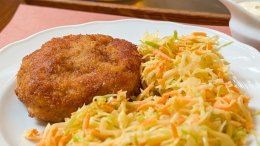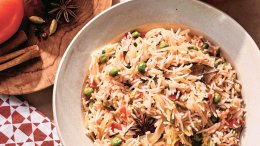It seems like Adam Snelling has been in the restaurant industry his whole life. With experience at the Chateau Laurier in Ottawa and the Delta Kananaskis G8 Summit, he jumped at the chance to open a high-end Japanese restaurant in the heart of beef-focused Calgary. At first, Adam was more excited about bringing something new to our plates than our glasses with Ki Modern’s Japanese, while admitting he didn't really like sake at the beginning. Now, he’s at the forefront of a small sake sommelier community in Canada, even going as far as spearheading the proposed expansion of Canada’s largest Kampai sake festival to Alberta.
How did you land on becoming a sake sommelier? It’s not a particularly common line of work.
After working in high-end restaurants in Italy and France and becoming a certified wine sommelier, it was an easy decision to do something new. My background in wine helped me see sake in a whole new way; I found it very intriguing.
I took my sake sommelier certification in Vegas in 2011 and it was incredible. They have such a vast selection of world renowned sakes; I quickly fell in love with it.
Did you find Calgarians receptive to Ki Modern’s concept?
We were blessed and cursed at the same time, being a very high-end Japanese fusion restaurant. We were proud to be the most expensive sushi restaurant in the city. If you’re eating raw fish on the cheap in a land-locked province, you’re probably not getting the highest quality product. Sometimes you have to pay for the quality. When we first opened over five years ago, we were obviously seeing a much smaller demographic of Calgary joining us, but, in turn, that brought us the right kind of diner.
How do you make sake recommendations to diners?
Years ago, I could assume that people hadn’t tried sake before. It just wasn’t a popular drink. For those who had, they knew what they wanted and my job was easy. But for the majority, I start off with their favourite wine or cocktail. Based on that, I can choose a sake that would suit their dining experience. White wine is actually a great reference point for understanding what sake guests may enjoy, so I draw on my wine sommelier experience regularly.
I ask questions and use descriptors that aren’t traditional and it helps make it relatable for primarily wine-focused diners. The Japanese find it very odd, the way I describe sake, but it’s challenged them to look at how they themselves describe sake to Westerners.
What is your current favourite sake?
Sake is very much like wine in that it can lend itself to seasonal selections. I like lighter floral notes in the summer, and something earthier in the colder months. Right now, I’ll start getting into southern or interior sakes that don’t have the coastal influences and they’re designed to go with richer items, like river fish.
There’s a great deal of ritual involved in preparing, eating, and enjoying Japanese food and drink. Is there one aspect in particular that stands out to you as intriguing?
I love the culture of drinking, not being allowed to pour your own drinks. The friends or the staff dictate how often you drink. It serves a dual purpose of being a good host, ensuring your guest’s glass is never empty, but you can also stop someone from continuing to drink by simply ceasing to pour.
You were one of the finalists for Western Living’s 2016 Foodie of the Year. What does that mean to you?
I was very honoured. I don’t think my trade is unique. I just want to share knowledge with people who want to learn. I was in the running with some amazing Canadians that have done a ton for the food and beverage industry in Canada. I don’t know if I belonged amongst those peers, but I was truly honoured.
What’s your idea of the perfect date here in Calgary?
Get a babysitter. And then, I’d probably take my wife to the theatre or a concert and a quick dinner; something that’s not a three-hour affair. Half bottle of wine, a few cocktails, and try a bunch of food that we wouldn’t make ourselves. Our perfect dates are usually just time together with a few great glasses of wine and trying awesome food.













